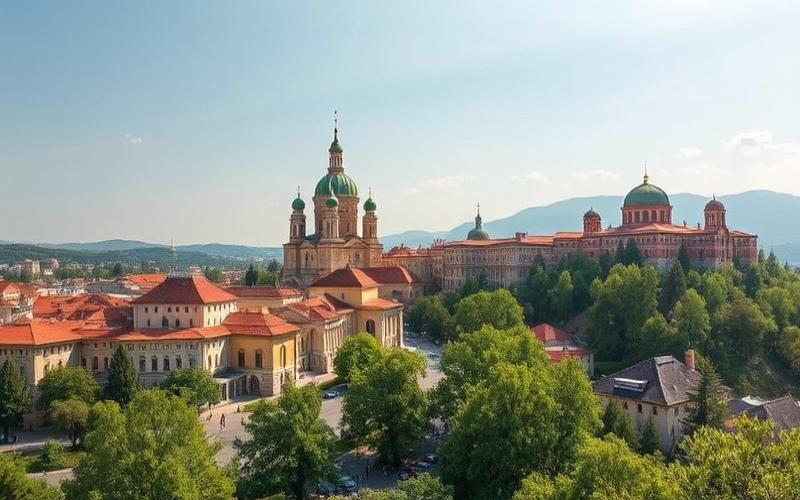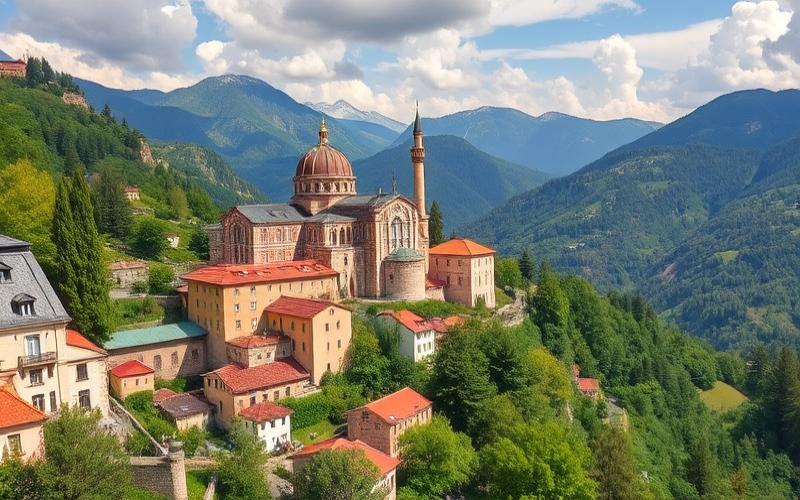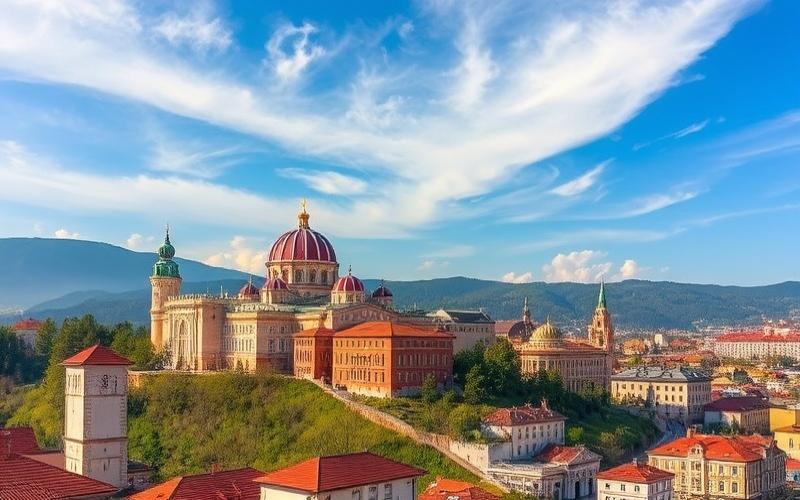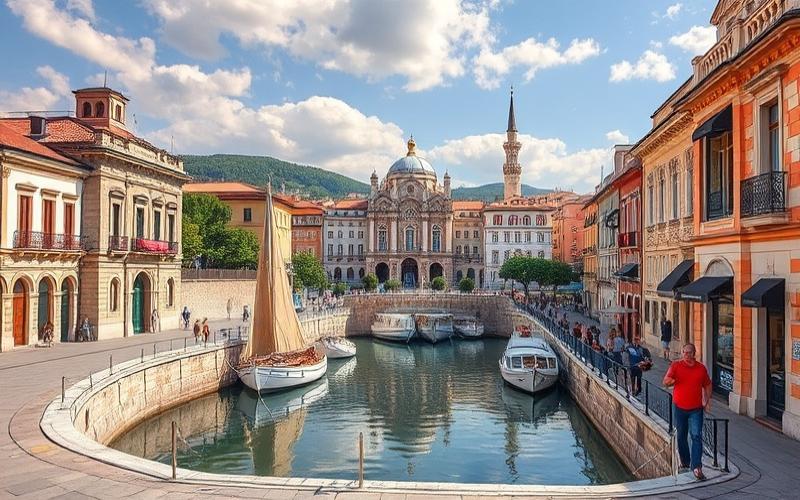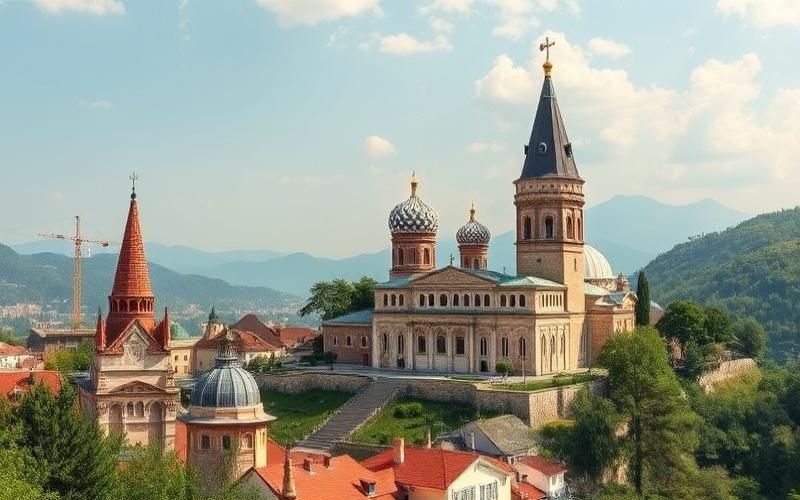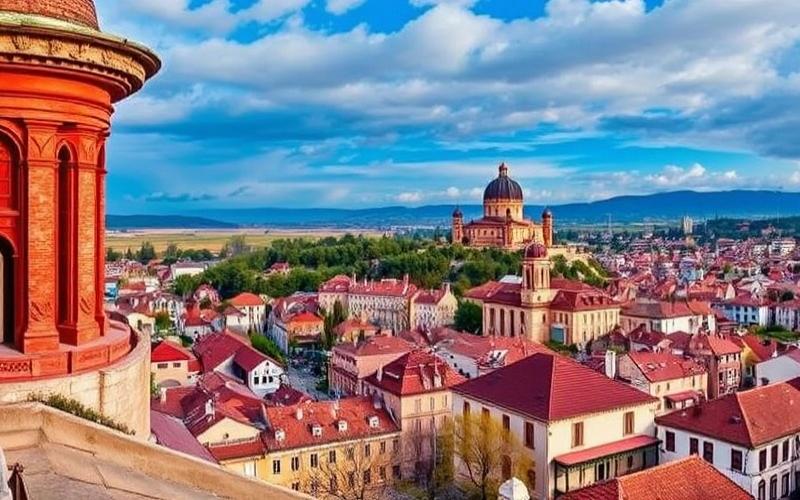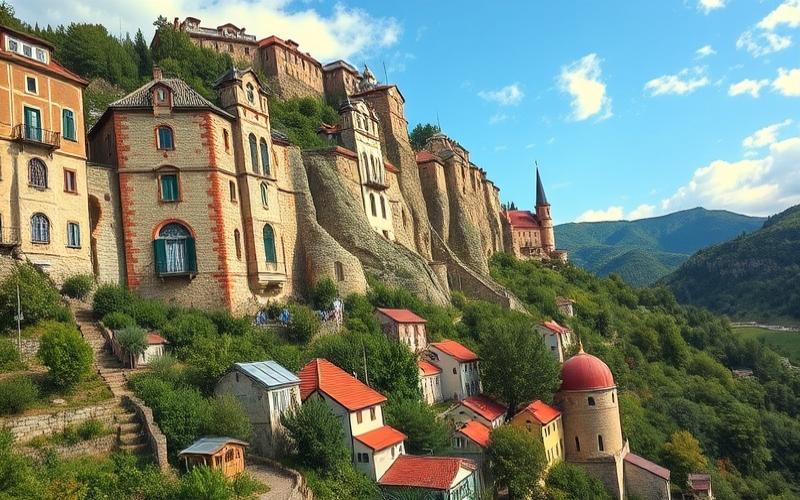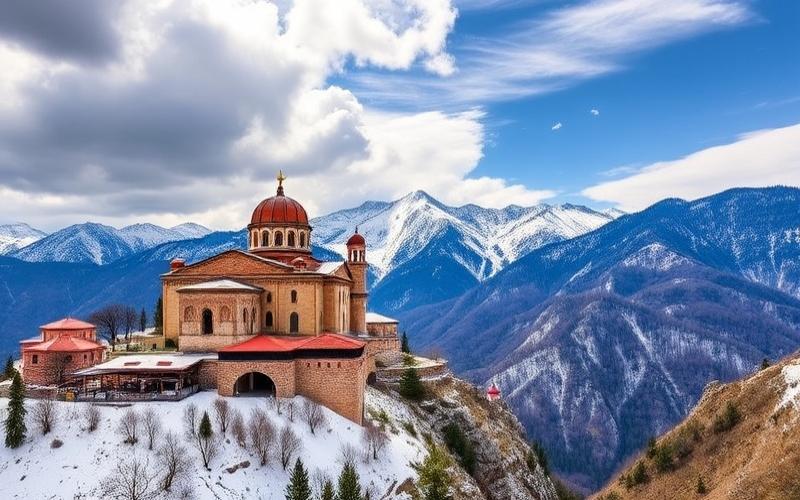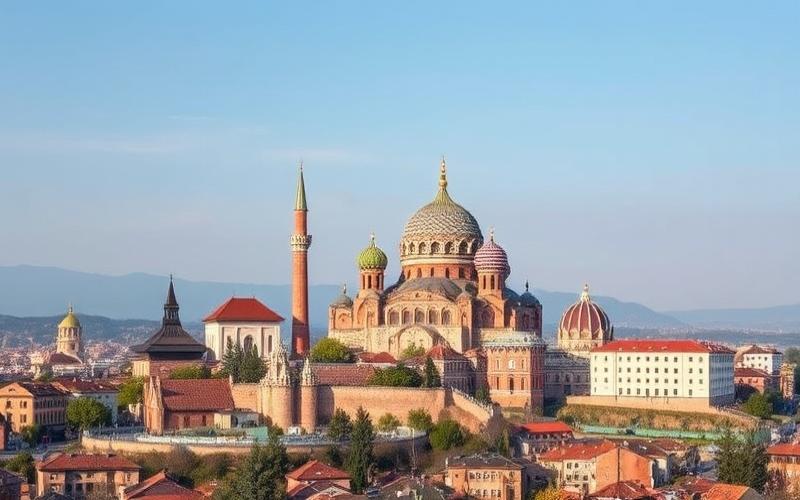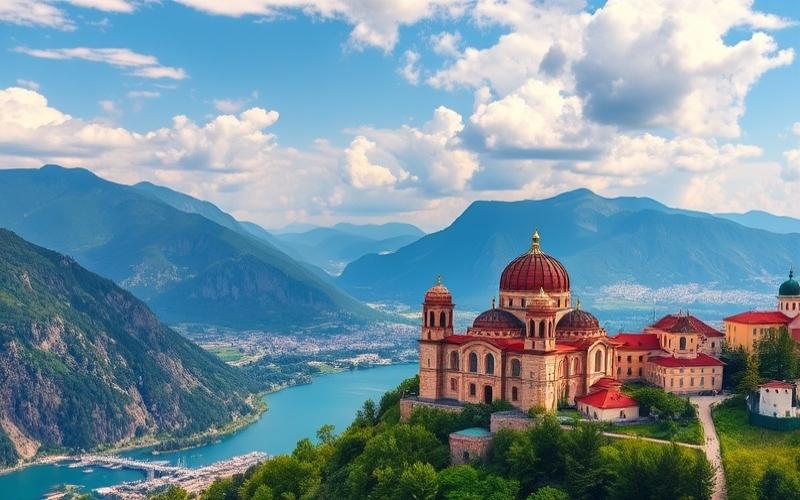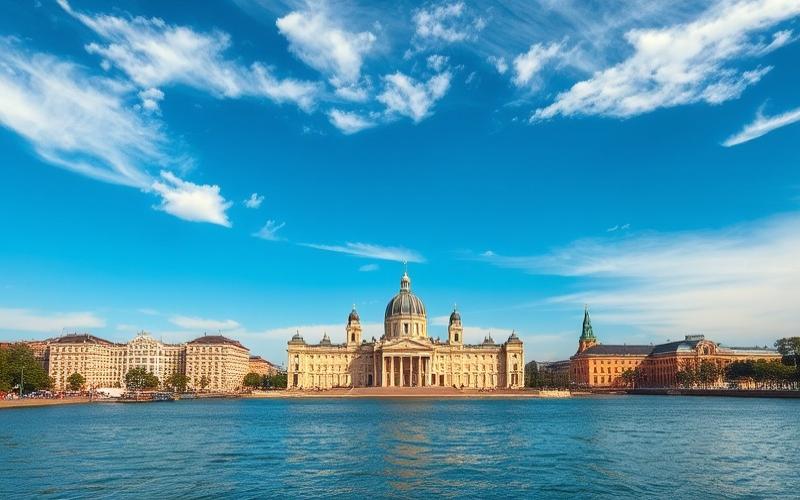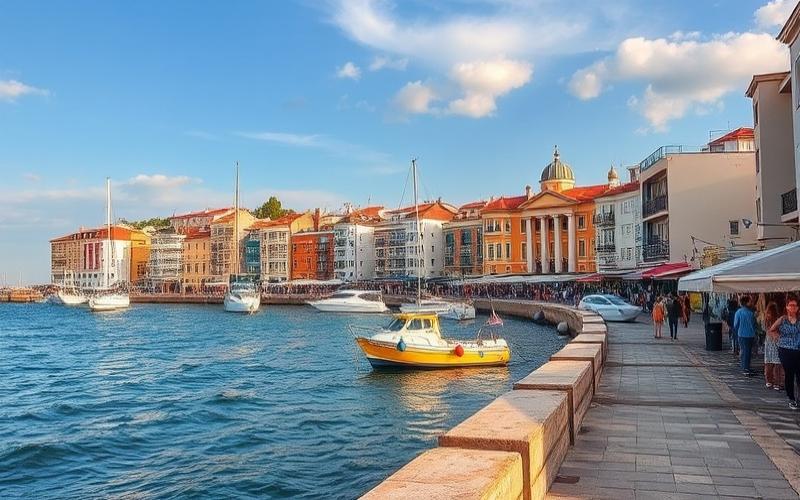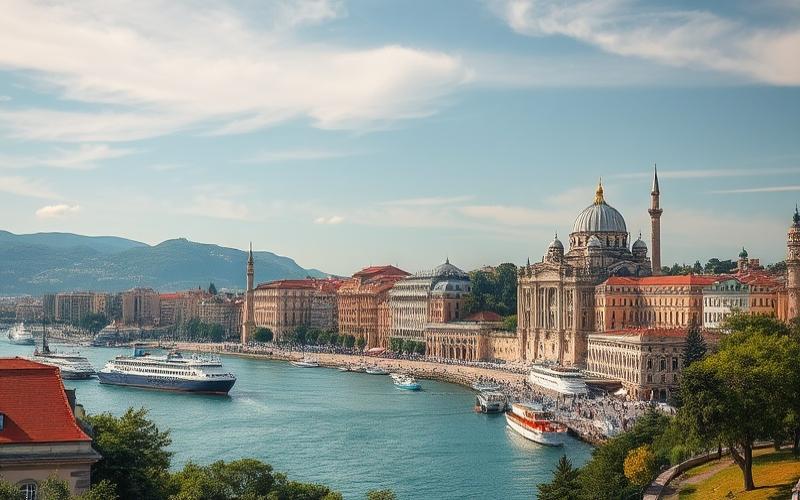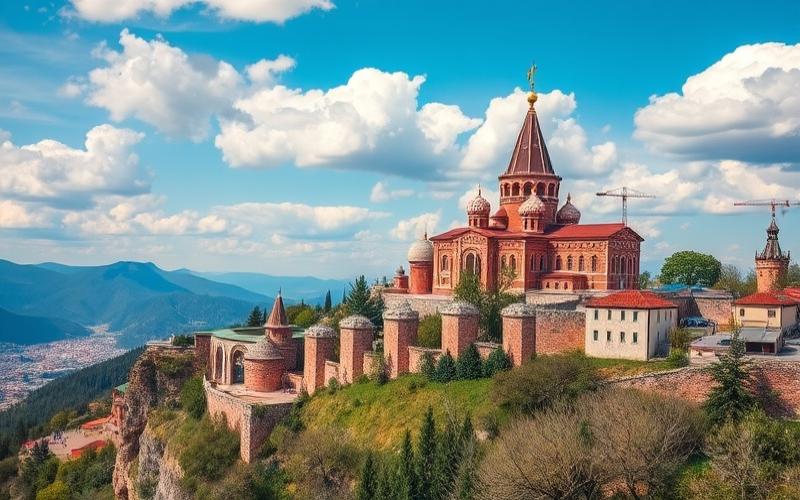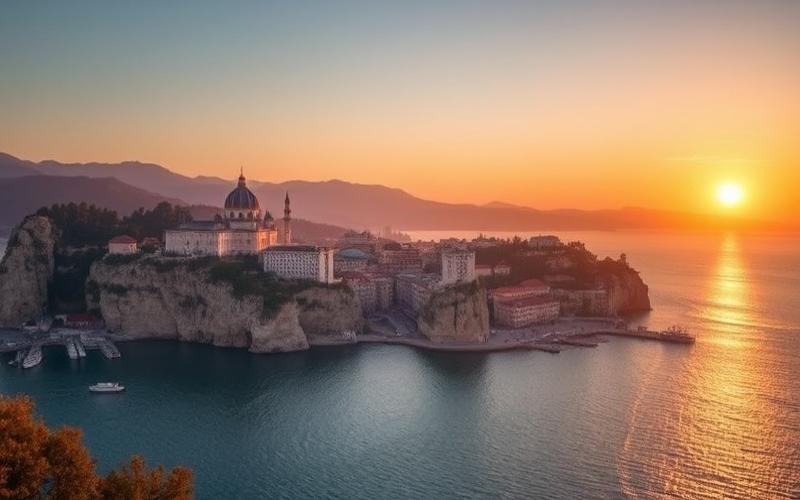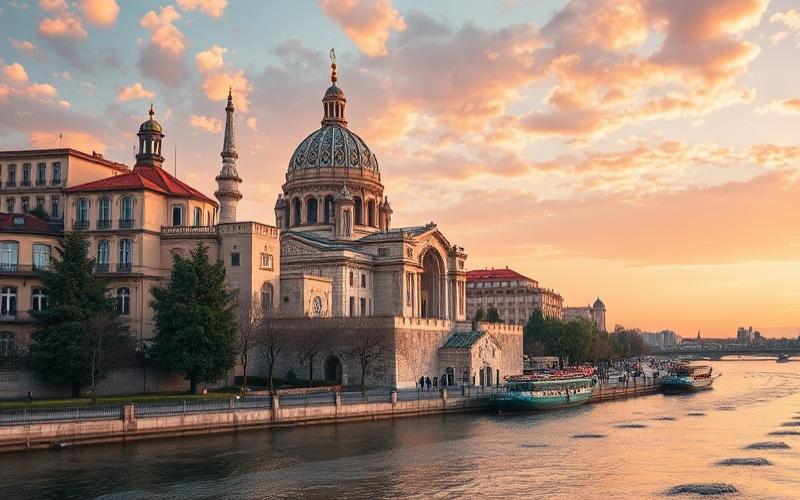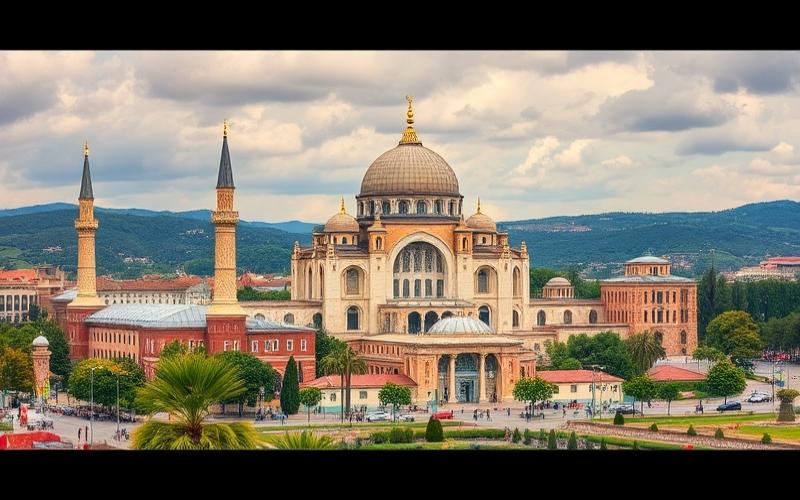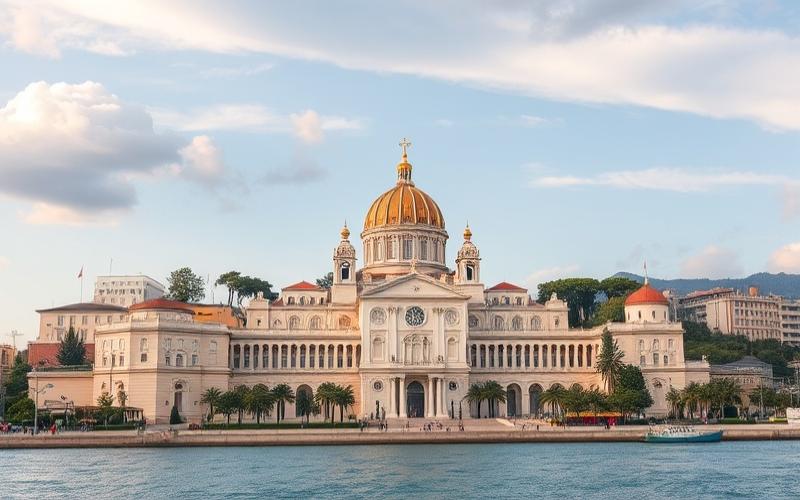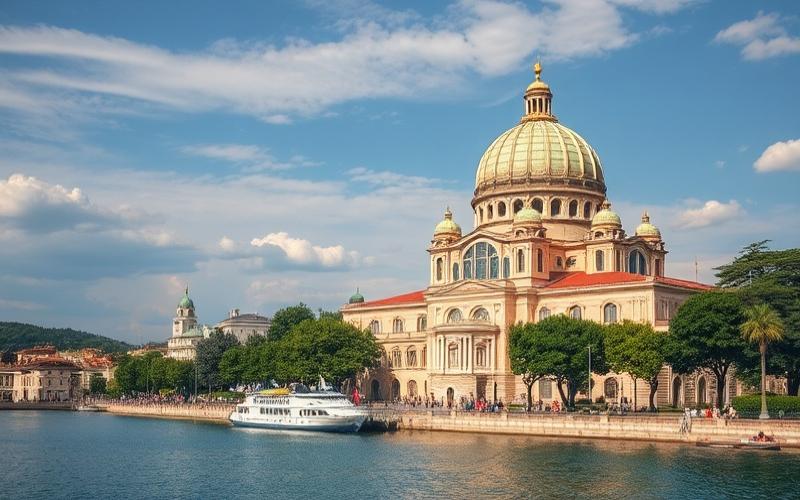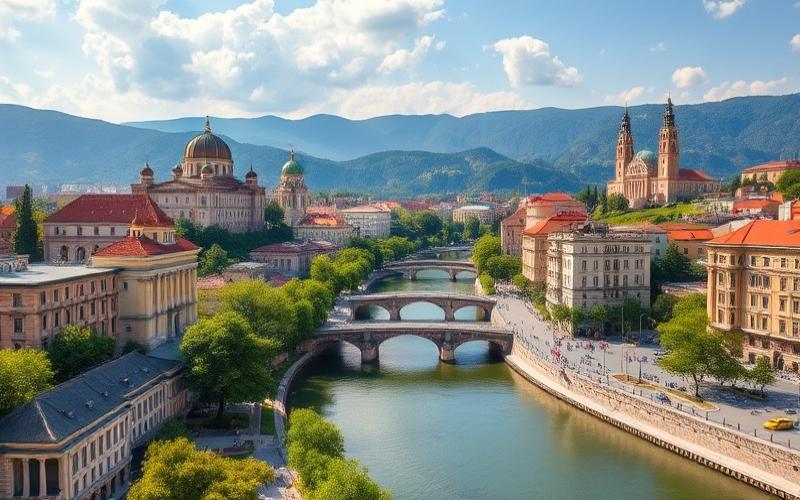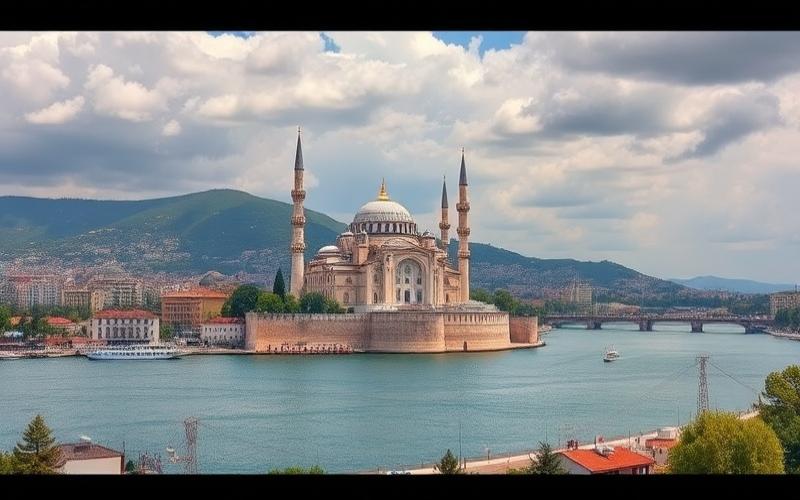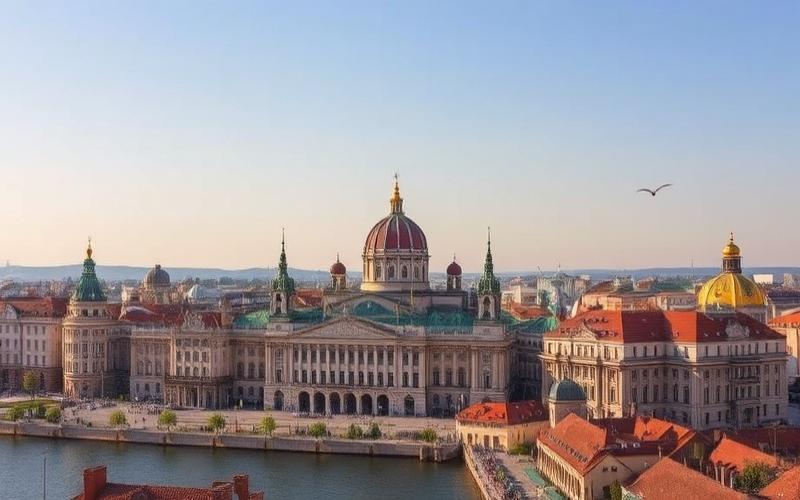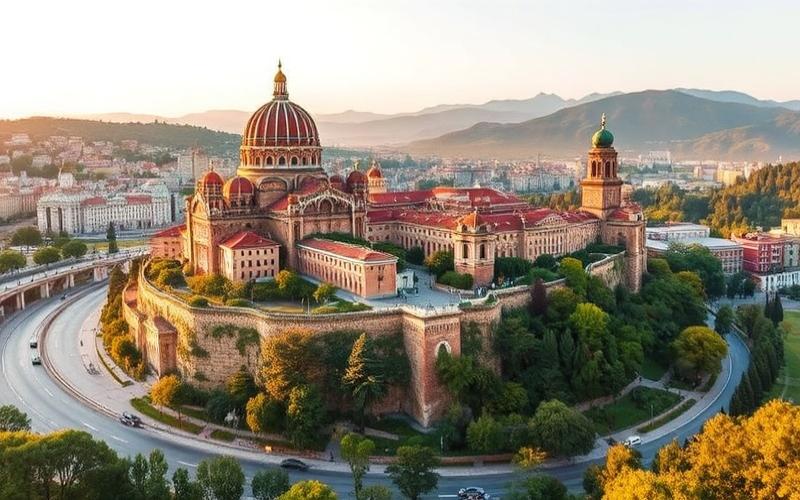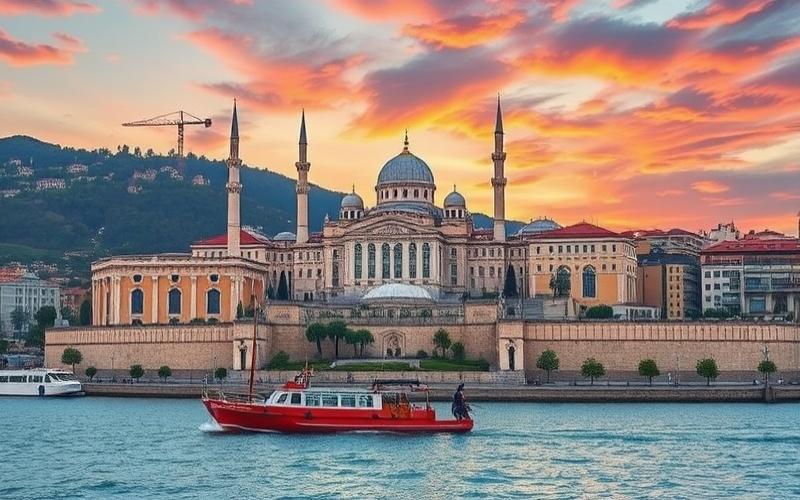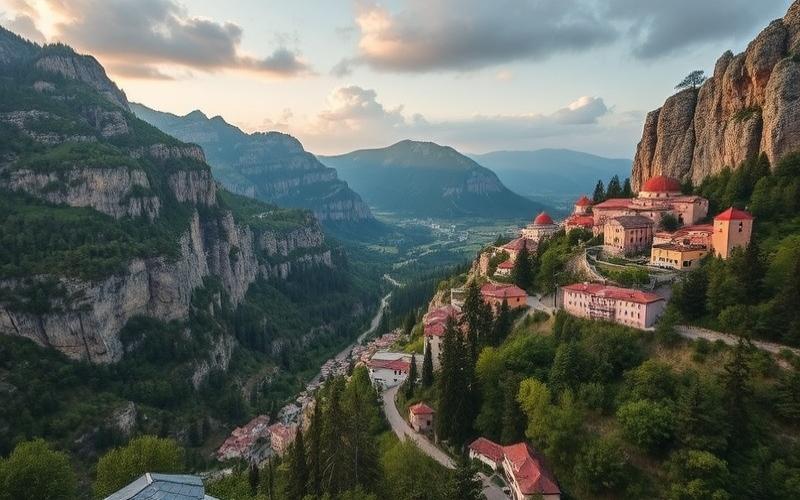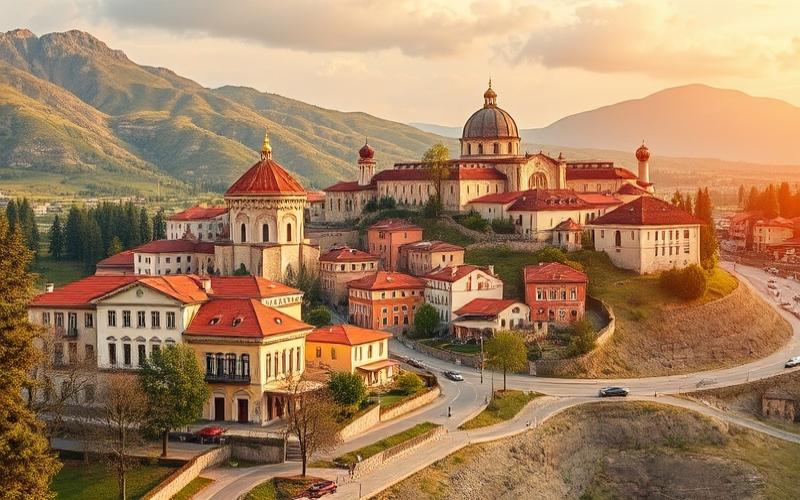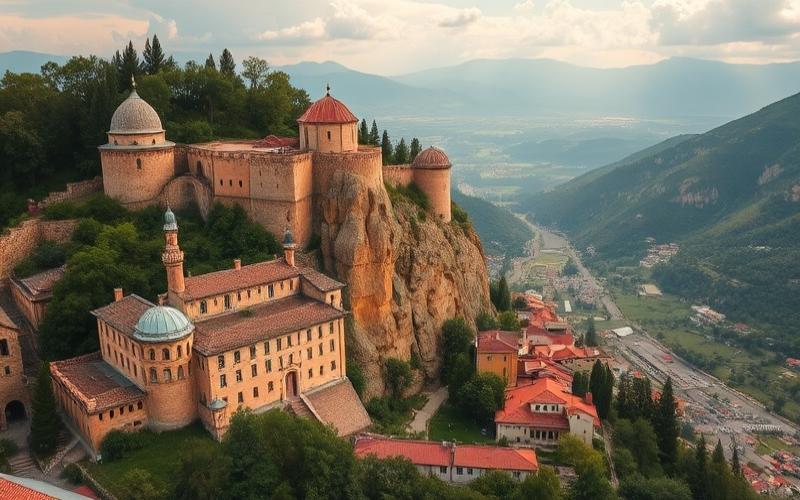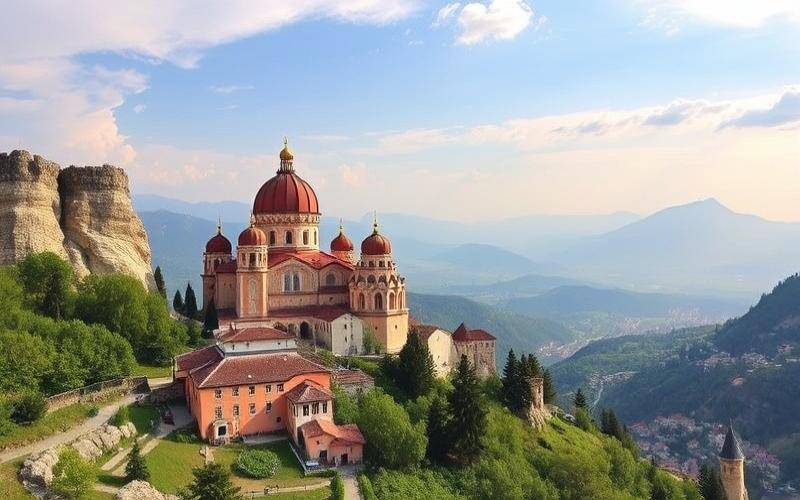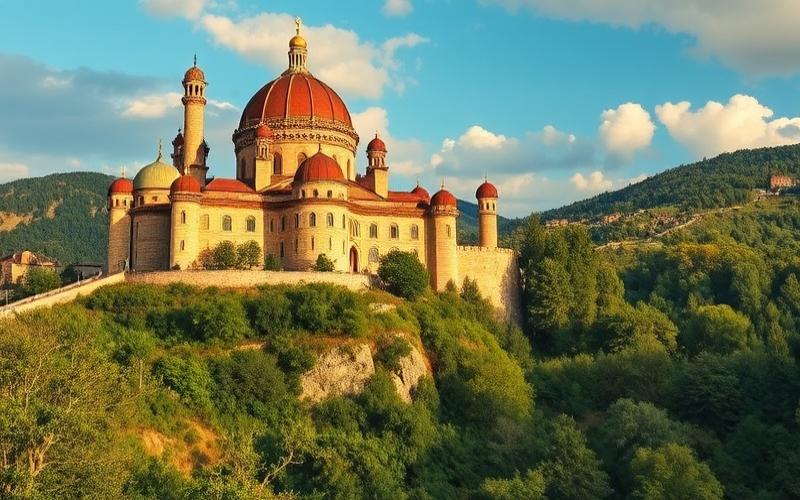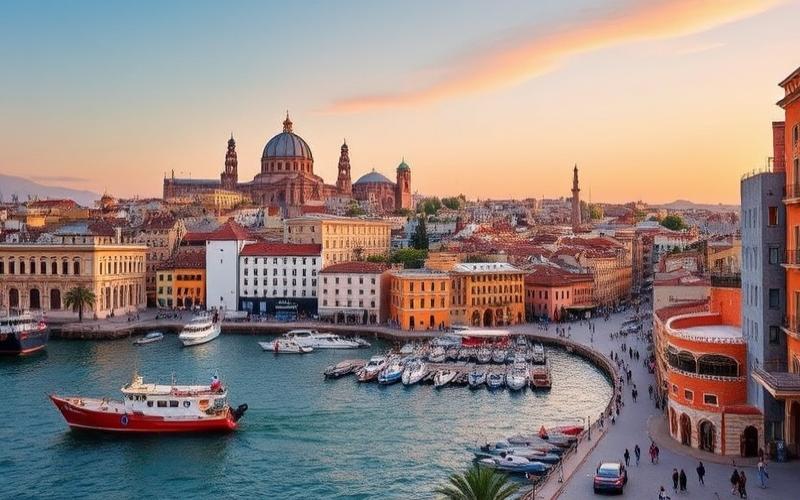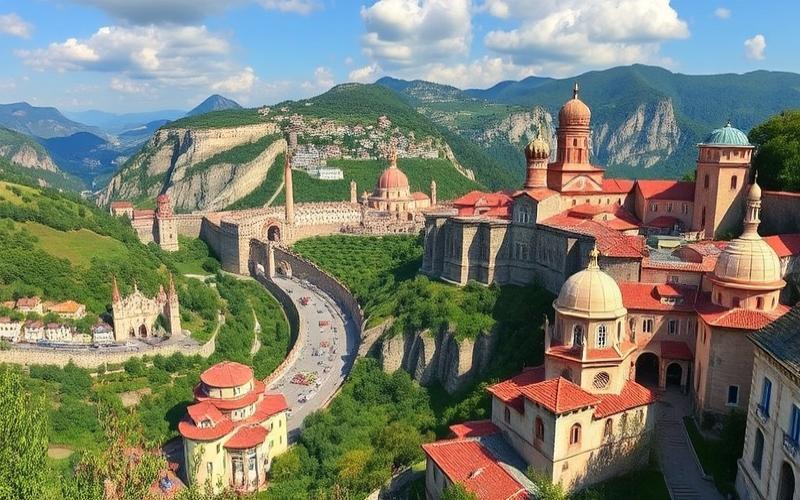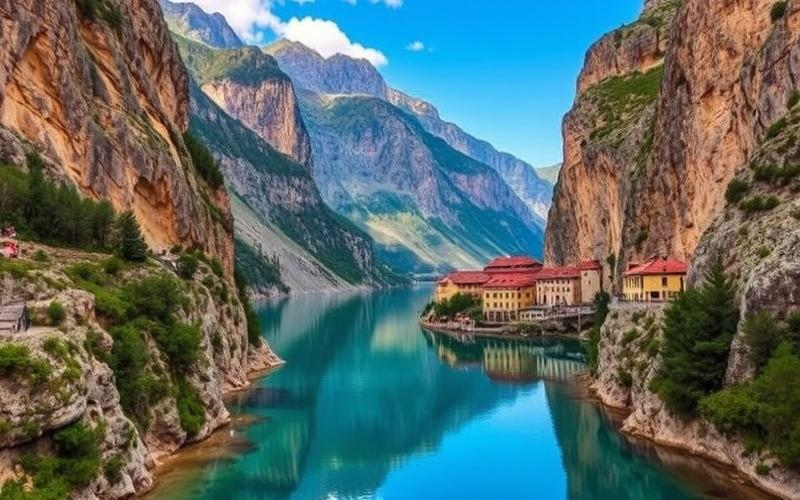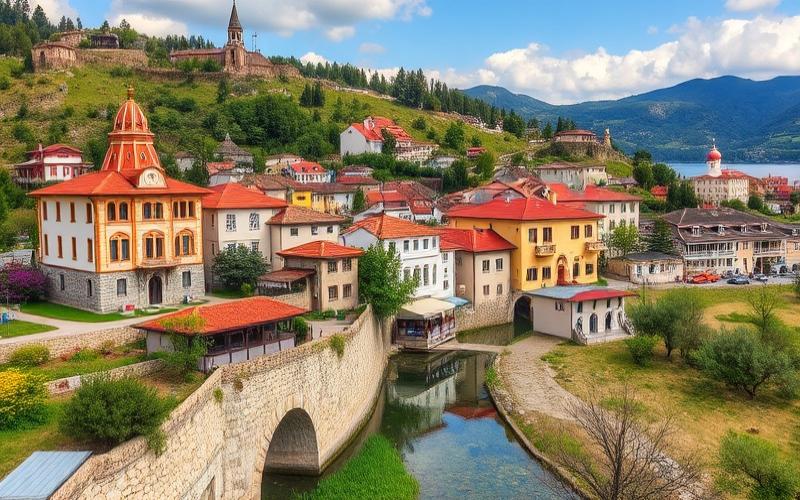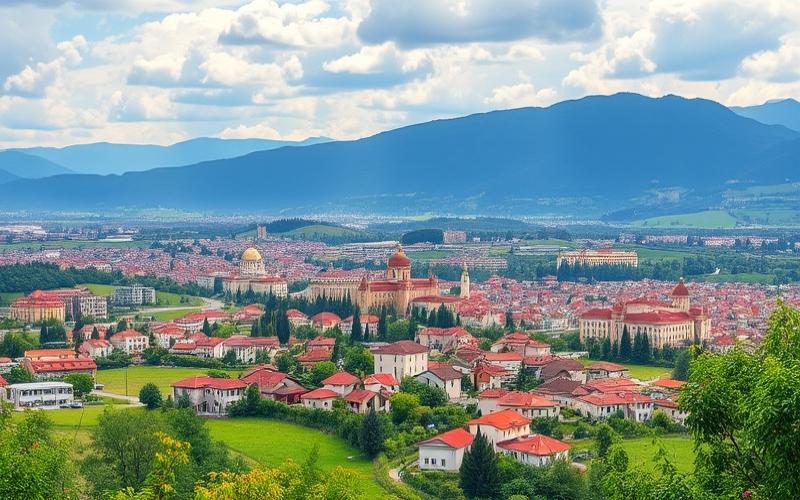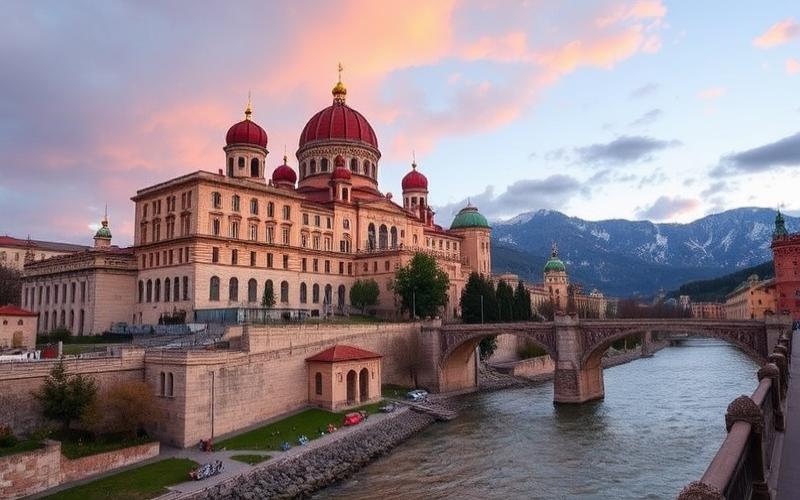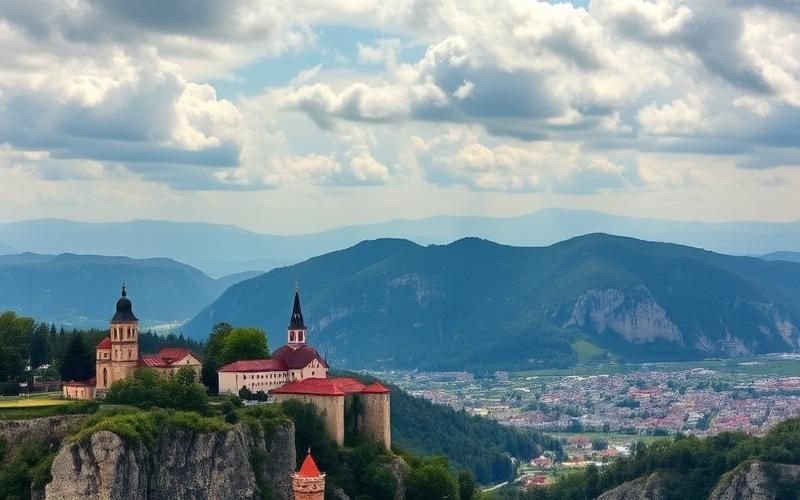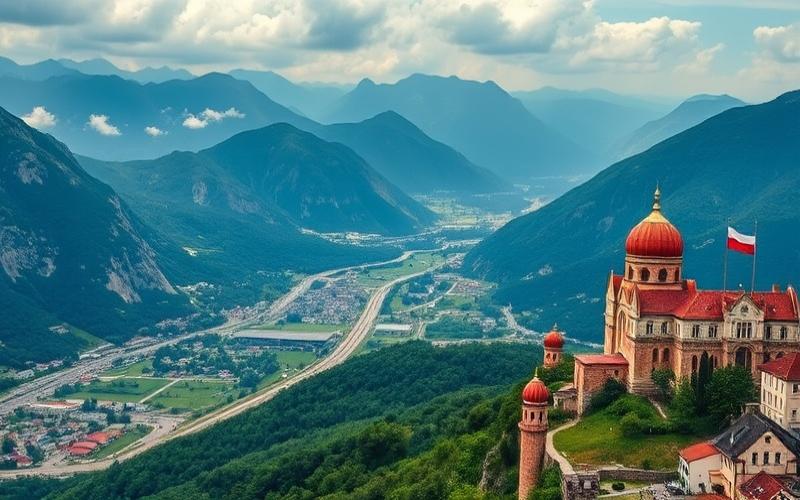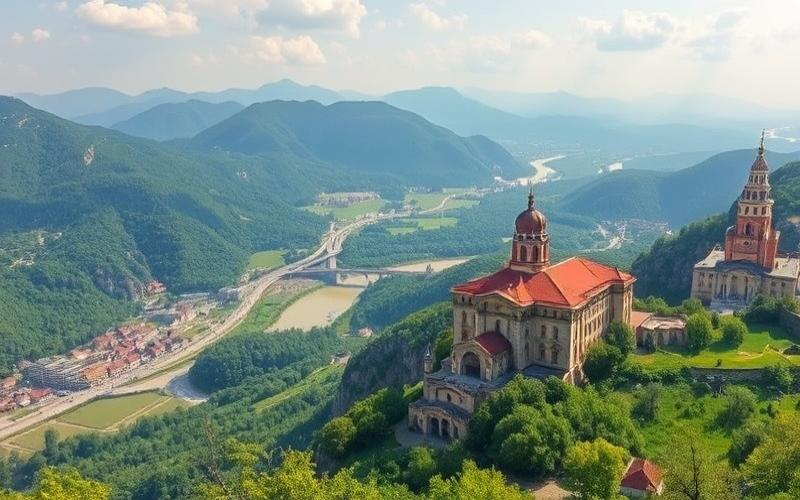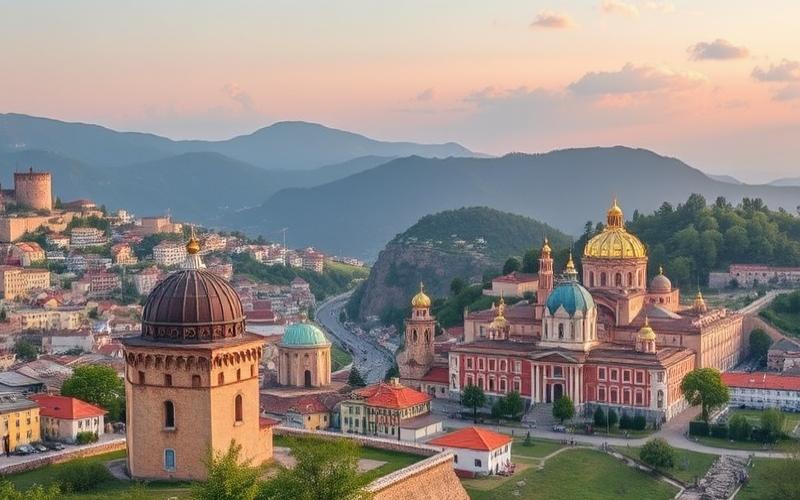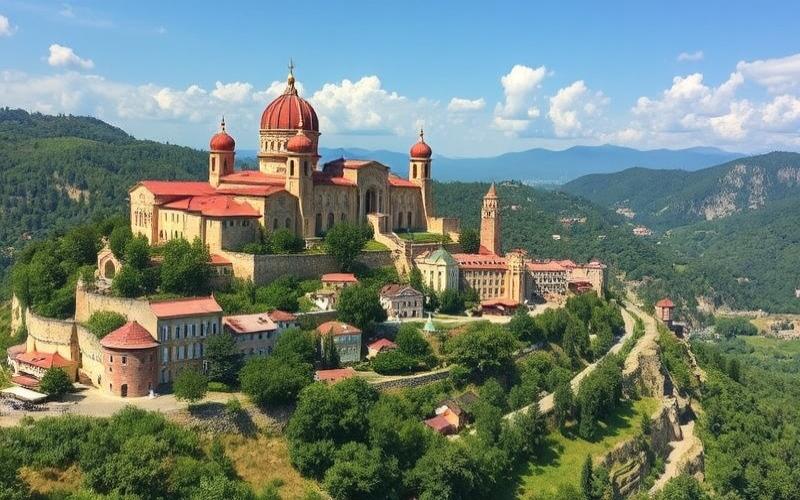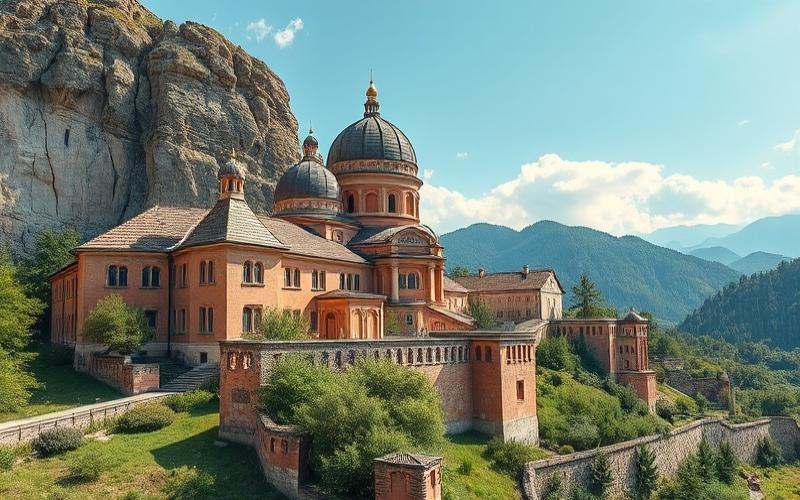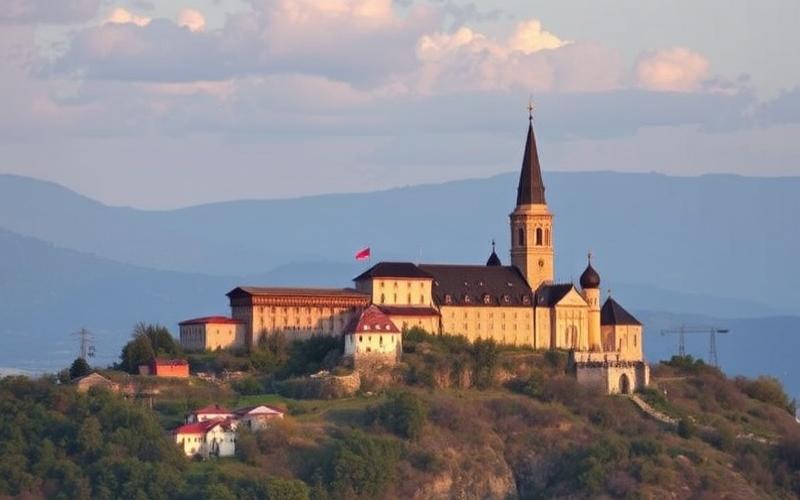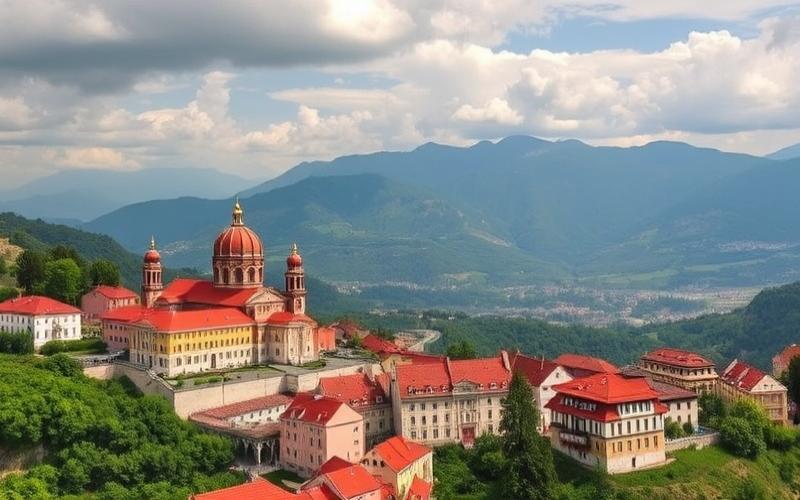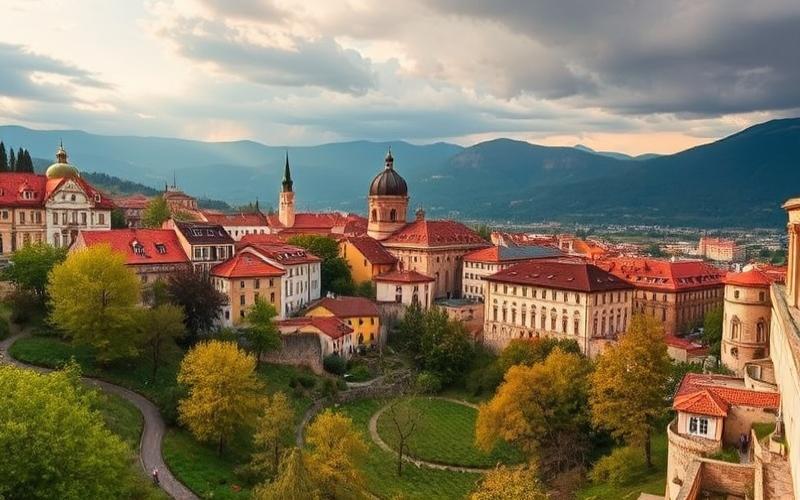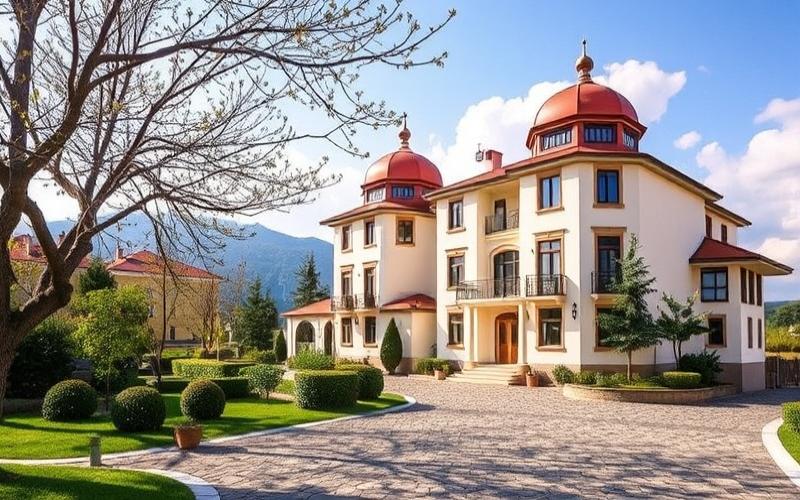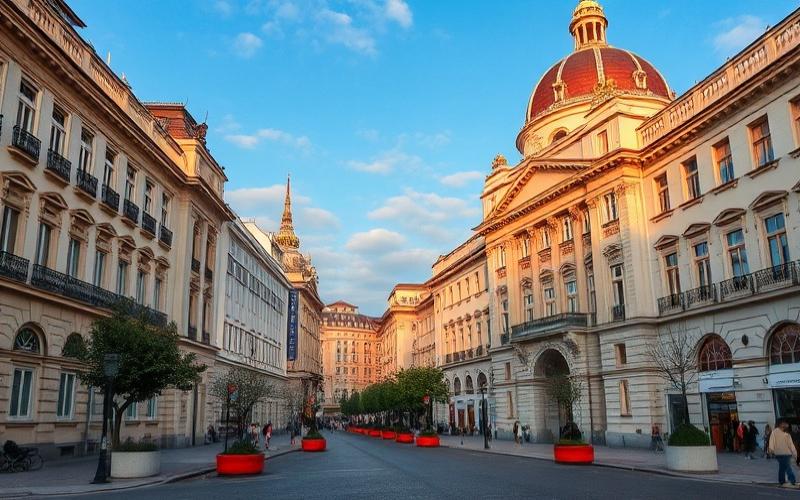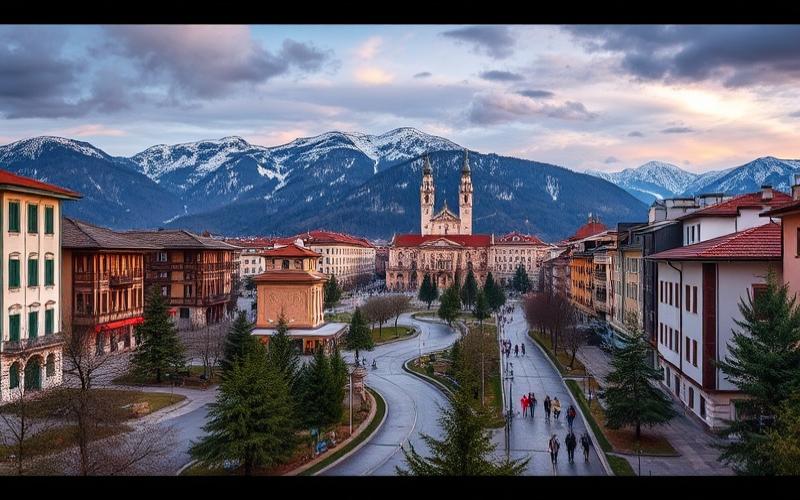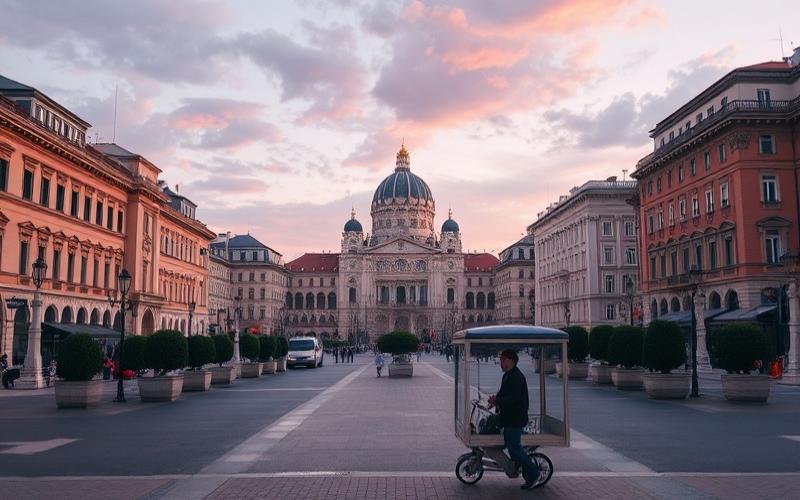
 Published on and written by Cyril Jarnias
Published on and written by Cyril Jarnias
Exploring the Eastern European real estate market can be a fascinating challenge for investors seeking new opportunities. This article examines the specific nuances and advantages of buying in Bulgaria, Croatia, and Romania, three destinations that offer not only enchanting landscapes but also promising economic opportunities. We will analyze acquisition costs, profitability potential, and local regulations, essential elements for making an informed choice in this dynamic market. Whether you’re looking for a seaside pied-à-terre, a downtown residence, or a profitable rental investment, this comparison will provide you with the keys to understanding why these countries are becoming must-consider options in European real estate.
Introduction to the Eastern European Real Estate Market
The Economic and Political Landscape in Eastern Europe
Eastern Europe has experienced dynamic economic growth in recent years, driven by increasing foreign investments and gradual integration into the European Union. This region, which includes countries like Poland, Hungary, the Czech Republic, Romania, and Bulgaria, has seen its GDP increase steadily, with growth rates above the European average. This positive economic evolution has significantly impacted the region’s real estate market, stimulating demand and attracting international investors.
Recent Eastern European Real Estate Market Trends
The Eastern European real estate market has experienced remarkable growth in recent years. Property prices have increased significantly in several countries in the region. For example, in Poland, housing prices increased by an average of 17.7% in the second quarter of 2022 compared to the previous year, while in Bulgaria, the increase was 15.1% during the same period. This upward trend reflects growing demand, both from local buyers and foreign investors.
Factors Influencing the Real Estate Market
Several factors contribute to the dynamics of the Eastern European real estate market. The constantly improving standard of living in these countries is attracting more and more potential buyers, while relatively low interest rates facilitate access to mortgage credit. The legal framework for real estate transactions has also improved in many countries, providing greater security for foreign investors.
Accessibility for foreign buyers varies by country, but the general trend is toward openness. In Poland, for example, EU citizens can purchase real estate without restrictions, while non-EU nationals must obtain special permission. This openness to foreign investors has helped stimulate the market, particularly in large cities and tourist areas.
Specifics of Real Estate Markets in Bulgaria, Croatia, and Romania
Although sharing some common characteristics, the real estate markets of Bulgaria, Croatia, and Romania have distinct specificities.
Bulgaria stands out for its particularly attractive property prices, especially on the Black Sea coast, attracting many foreign investors looking for second homes.
Croatia, with its Adriatic coastline, experiences strong demand in the tourism sector, which stimulates the market for seasonal rentals and vacation homes.
Romania, on the other hand, benefits from robust economic growth and an expanding real estate market, particularly in large cities like Bucharest, where prices have seen significant increases in recent years.
Recent Statistical Data
Recent figures illustrate the vitality of the Eastern European real estate market. In 2024, foreign buyers acquired more than 14,300 apartments in Poland, representing a total living area of 600,000 square meters. Ukrainian citizens were particularly active, purchasing approximately 380,000 square meters of properties, followed by Belarusians with 111,000 square meters. These data highlight the growing appeal of the region for international investors and the diversification of buyer profiles.
Good to know:
The real estate market in Eastern Europe is influenced by distinct economic and political dynamics, with notable differences between Bulgaria, Croatia, and Romania. Bulgaria, for example, has benefited from stable economic growth, attracting investments thanks to a favorable legal framework and competitive property prices. In Croatia, the market is supported by tourism, but varied and sometimes high prices can pose challenges for foreign buyers. Romania, on the other hand, presents a booming market with rapidly increasing prices, reflecting a dynamic developing economy. The constantly improving standard of living and growing infrastructure in these countries stimulate attractiveness for investors. According to recent data, the average price per m² in Romania is around €1,200, compared to €900 in Bulgaria and €1,600 in Croatia, demonstrating market differences and investment opportunities. For foreign buyers, the legal framework is generally welcoming, although local specificities may apply, highlighting the importance of understanding each market well before purchasing.
Comparing Real Estate Purchase Costs in Bulgaria, Croatia, and Romania
Comparison of Real Estate Markets in Bulgaria, Croatia, and Romania
The real estate markets of Bulgaria, Croatia, and Romania offer interesting opportunities for foreign investors, each presenting its own characteristics and advantages.
Average Prices per Square Meter
In Bulgaria, the average price per square meter varies considerably by region. In Sofia, the capital, prices reach about €2,000 per square meter in 2025, while in popular seaside resorts like Sunny Beach, apartments can still be found for less than €1,500 per square meter. Rural areas offer even lower prices, sometimes below €800 per square meter.
In Croatia, prices are generally higher, especially in coveted coastal regions. In the Istria region, the average price per square meter reaches €3,517, while in Kvarner, it rises to €3,500. In Split-Dalmatia, the average price is €3,490 per square meter. The capital Zagreb shows average prices of €3,071 per square meter.
In Romania, prices are more moderate. In Bucharest, the capital, the average price per square meter is about €1,600. In secondary cities like Cluj-Napoca or Timișoara, prices range between €1,200 and €1,500 per square meter. Rural areas offer even more affordable opportunities, with houses available for less than €50,000.
Regulations for Foreign Buyers
In Bulgaria, foreigners can purchase buildings. EU citizens can buy land, while non-EU nationals must create a Bulgarian company to do so.
Croatia has eased its restrictions since joining the EU. EU citizens can purchase real estate under the same conditions as Croatians. Non-EU nationals can purchase real estate subject to reciprocity between Croatia and their country of origin.
In Romania, EU citizens can purchase real estate without restrictions. Non-EU nationals can purchase buildings, but land purchase is subject to certain conditions.
Additional Fees and Taxes
In Bulgaria, total acquisition costs represent about 6 to 8% of the purchase price. This includes notary fees (0.1 to 1.5%), registration fees (0.1%), and property transfer tax (2 to 4%).
In Croatia, total fees can reach 7 to 10% of the purchase price. The property transfer tax is 3%, notary fees range between 0.5 and 1.5%, and agency fees are typically 3%.
In Romania, additional fees are lower, representing about 5 to 10% of the purchase price. This includes notary fees (0.5 to 1%), registration fees (0.5%), and value-added tax for new properties (5%).
Influence of Economic Fluctuations
The Bulgarian market has experienced impressive growth, with a price increase of 121.91% since 2015. This rise is particularly marked in Sofia, where prices have increased by 154.93% over the same period.
In Croatia, the real estate market has also experienced strong growth, particularly in coastal regions. Joining the Schengen area in 2023 has reinforced the country’s attractiveness for foreign investors.
The Romanian market shows more moderate but steady growth. The housing price index rose to 155.86 points in the third quarter of 2024, compared to 155.06 points in the previous quarter, reflecting a continuous upward trend.
Financing and Mortgages for Foreign Buyers: Cash is King, Credit is Hardly Accessible for Foreigners!
In Bulgaria, local banks offer mortgages to foreigners, but conditions are generally very strict. Interest rates range between 3.5 and 4%, with a required personal contribution of at least 30%.
In Croatia, foreign buyers can obtain mortgages from local banks very difficultly. Interest rates are competitive, hovering around 3 to 4%, with a personal contribution generally required of 20 to 30%.
In Romania, local banks are open to foreign buyers, but conditions can vary and are very complex to set up. Interest rates for fixed-rate mortgages are between 5.5 and 6%. The Romanian government also offers special programs for first-time buyers, making homeownership more accessible.
Good to know:
In Bulgaria, the average price per square meter in cities like Sofia hovers around €2,000 (excluding city center), with significantly lower costs in rural regions, while in Croatia, Zagreb records prices ranging from €2,500 to €3,500, with coastal destinations reaching up to €5,000 per square meter. Romania, with Bucharest, offers rates of €1,800 to €2,200 per square meter in urban areas; rural areas are much more affordable. Regulations for purchase by foreigners vary: in Bulgaria and Croatia, procedures are relatively simple, while Romania imposes restrictions for agricultural land. Additional fees include about 2% registration fees in Bulgaria, 4% in Croatia, and minimally 1% in Romania. Economic fluctuations influence these markets, with increasing inflation in Croatia boosting coastal prices. The availability of financing for foreigners is limited and variable, with Bulgaria offering mortgages with a 30% down payment, versus 50% in Croatia, while in Romania, it depends on the chosen bank.
Analysis of Tax Regimes for Foreign Investors
Tax Regimes for Foreign Investors in Bulgaria, Croatia, and Romania
The tax regimes applied to foreign investors in Bulgaria, Croatia, and Romania present significant differences that deserve in-depth analysis. These three Eastern European countries seek to attract foreign investments, particularly in the real estate sector, but their tax approaches vary.
Taxation of Rental Income
In Bulgaria, rental income is taxed at a fixed rate of 10%, one of the lowest in Europe. Foreign investors benefit from the same treatment as Bulgarian residents.
Croatia applies a progressive rate ranging from 12% to 40% on rental income, with the possibility of deducting certain property-related expenses.
In Romania, the tax rate on rental income is 10%.
Taxation of Real Estate Capital Gains
Bulgaria fully exempts real estate capital gains after a holding period of 3 years. For properties held for a shorter period, the tax rate is 10%.
In Croatia, capital gains are taxed at 12% if the property is sold within two years of acquisition. Beyond that, they are exempt.
Romania applies a rate of 3% on capital gains for properties held less than 3 years, and exempts those held longer.
Tax Incentives for Foreign Investors
Bulgaria offers tax relief for investments in high-unemployment regions and for large-scale projects. Investors can benefit from a full corporate tax exemption for 5 years in certain economic zones.
Croatia offers tax reductions for investments in free zones and less developed regions. Large projects can benefit from direct subsidies.
In Romania, foreign investors can take advantage of temporary tax exemptions for investments in certain priority sectors and in industrial parks.
Impact of Double Taxation Conventions
All three countries have signed numerous double taxation conventions with other European states, which can significantly reduce the tax burden for foreign investors.
For example, a German investor owning a rental property in Bulgaria could benefit from a reduced withholding tax rate on their rental income thanks to the German-Bulgarian convention. Similarly, a French investor in Croatia could avoid double taxation on their real estate capital gains under the Franco-Croatian agreement.
Comparative Case Study
Consider the case of a British investor purchasing an apartment valued at €200,000 in each of the three countries, generating an annual rental income of €12,000 and sold after 4 years with a capital gain of €40,000.
In Bulgaria: – Tax on rental income: €1,200/year – Tax on capital gain after 3 years:
0 euros
In Croatia: – Tax on rental income: approximately €1,440/year (assuming the minimum rate of 12%) – Tax on capital gain: 0 euro (exemption after 2 years)
In Romania: – Tax on rental income: €720/year (with the flat-rate regime option) – Tax on capital gain: €1,200
This comparison shows that Bulgaria offers the most advantageous taxation for rental income, while Croatia is more interesting for medium-term capital gains. Romania presents a balance between both aspects.
Long-Term Tax Implications
For foreign investors considering long-term real estate investments in these countries, several factors should be considered:
– Tax stability: Bulgaria has maintained its low tax rate for several years, offering some predictability.
– Evolution of tax conventions: Double taxation agreements are regularly renegotiated, which could modify tax benefits in the future.
– Potential tax reforms: Croatia and Romania might adjust their tax regimes to remain competitive with Bulgaria.
– European tax harmonization: EU efforts to standardize tax practices could impact current benefits.
Investors should therefore remain vigilant about legislative and tax developments in these countries, while taking advantage of current opportunities offered by their attractive tax regimes.
Good to know:
In Bulgaria, foreign investors benefit from an advantageous tax rate of 10% on rental income and real estate capital gains, which is particularly interesting compared to Croatia, where rental income is taxed at 20% and capital gains can be taxed up to 30% depending on the property’s holding period. Romania offers a flat tax rate of 10% on rental income, but provides exemptions on capital gains if the property is held for more than three years. All three countries have double taxation agreements that can reduce tax burdens for investors residing in other EU countries. For example, a French investor in Bulgaria could benefit from a tax credit in France that would offset the Bulgarian tax burden. In the long term, Bulgaria stands out for its tax stability and incentives for foreign investment, while Croatia and Romania offer occasional benefits that are more dependent on frequent legislative changes.
Factors to Consider When Investing in the Balkans
Comparative Economic Analysis: Bulgaria, Croatia, and Romania
The Balkan region offers unique investment opportunities, with Bulgaria, Croatia, and Romania at the forefront. These countries present distinct economic profiles but share some common characteristics that make them attractive to foreign investors.
Bulgaria stands out for its macroeconomic stability and advantageous taxation. With a corporate tax rate of only 10%, the country attracts many international investors. The Bulgarian economy has experienced steady growth in recent years, with GDP rising by 2.8% in 2024. Key sectors include information technology, the automotive industry, and tourism.
Croatia, recently entered the eurozone, benefits from a diversified economy and a flourishing tourism sector. The country recorded GDP growth of 3.6% in 2024, stimulated by a robust post-pandemic recovery. High-tech industries, such as biotechnology and renewable energy, are developing rapidly.
Romania, on the other hand, positions itself as a dynamic emerging market with GDP growth of 1.2% in 2024. The country attracts investors thanks to its skilled and relatively inexpensive workforce, particularly in engineering and information technology sectors.
Infrastructure and Regional Connectivity
All three countries have made significant progress in developing their infrastructure, although disparities remain. Bulgaria has invested heavily in improving its road network, with projects such as the “Hemus” highway connecting Sofia to Varna. Croatia has modernized its port infrastructure, particularly the port of Rijeka, strengthening its strategic position on the Adriatic Sea. Romania has concentrated its efforts on expanding its railway network, with projects like the Bucharest-Cluj-Napoca high-speed line.
The “Peace Highway”, a major infrastructure project supported by the European Union, aims to improve connectivity between Serbia and Kosovo, with positive implications for the entire Balkan region. This project illustrates the EU’s commitment to promoting regional integration and economic development.
Investment Climate and Political Stability
The investment climate in these three countries has improved considerably over the past decade, although challenges persist. Bulgaria has simplified its administrative procedures for foreign investors, reducing delays and costs associated with business creation. Croatia has implemented attractive tax incentives for strategic investment projects, particularly in special economic zones. Romania has strengthened its legal framework for the protection of foreign investments, offering additional guarantees to investors.
However, political stability remains an issue in the region. Bulgaria has experienced periods of governmental instability, with several early elections in recent years. Croatia has shown greater political stability, but tensions persist with its neighbors over border issues. Romania has faced challenges related to corruption, although notable progress has been made in combating this phenomenon.
Skilled Workforce and Competitive Costs
All three countries offer a skilled workforce at competitive costs, a major asset for investors. Bulgaria stands out for its talent in the information technology field, with a growing number of computer science graduates each year. Croatia has a highly skilled workforce in engineering and life sciences sectors. Romania is recognized for its skills in mathematics and sciences, fueling an expanding technology sector.
Wage costs remain advantageous compared to Western Europe, although they have increased in recent years. In 2022, the average monthly salary was about €750 in Bulgaria, €1,200 in Croatia, and €900 in Romania.
Growth Sectors and Investment Opportunities
Each country presents specific growth sectors offering interesting investment opportunities:
In Bulgaria, the information technology sector is experiencing rapid growth, with companies like Telerik and Chaos Group attracting international attention. Tourism, particularly along the Black Sea coast, also offers promising prospects.
Croatia positions itself as a hub for renewable energy, with offshore wind turbine projects in the Adriatic Sea. The digital health sector is also expanding rapidly, stimulated by innovative startups.
In Romania, the automotive industry is booming, with major investments from manufacturers like Dacia-Renault and Ford. The agricultural sector, benefiting from vast arable lands, also attracts investments in precision agriculture and food processing.
Examples of Successful Investments
Several foreign investments have achieved notable success in the region:
– In Bulgaria, the German company Lufthansa Technik established an aircraft maintenance center in Sofia, creating more than 1,000 skilled jobs and stimulating the development of the local aerospace industry.
– In Croatia, pharmaceutical giant Pfizer invested in a development center in Zagreb, leveraging local biotechnology expertise and strengthening the country’s position in medical research.
– In Romania, automobile manufacturer Dacia-Renault significantly expanded its operations, making the country a major production center for the group and stimulating the development of an entire ecosystem of local suppliers.
These examples illustrate the investment potential in the Balkans, while emphasizing the importance of a thorough understanding of local specificities and challenges unique to each market.
Good to know:
When considering investing in the Balkans, it is crucial to consider the particularities of Bulgaria, Croatia, and Romania. Bulgaria offers an attractive investment climate with low corporate tax at 10% and affordable skilled labor, but it suffers from sometimes deficient infrastructure. Croatia, although politically stable, has a higher tax rate and labor costs similar to EU standards, but attracts with its flourishing tourism. In Romania, economic growth is robust with many tax incentives and an expanding technology sector, although it is still marked by heavy bureaucracy. A notable example is the establishment of logistics platforms in Romania by multinational companies, capitalizing on its strategic geopolitical position for distribution in Eastern Europe.
Disclaimer: The information provided on this website is for informational purposes only and does not constitute financial, legal, or professional advice. We encourage you to consult qualified experts before making any investment, real estate, or expatriation decisions. Although we strive to maintain up-to-date and accurate information, we do not guarantee the completeness, accuracy, or timeliness of the proposed content. As investment and expatriation involve risks, we disclaim any liability for potential losses or damages arising from the use of this site. Your use of this site confirms your acceptance of these terms and your understanding of the associated risks.

